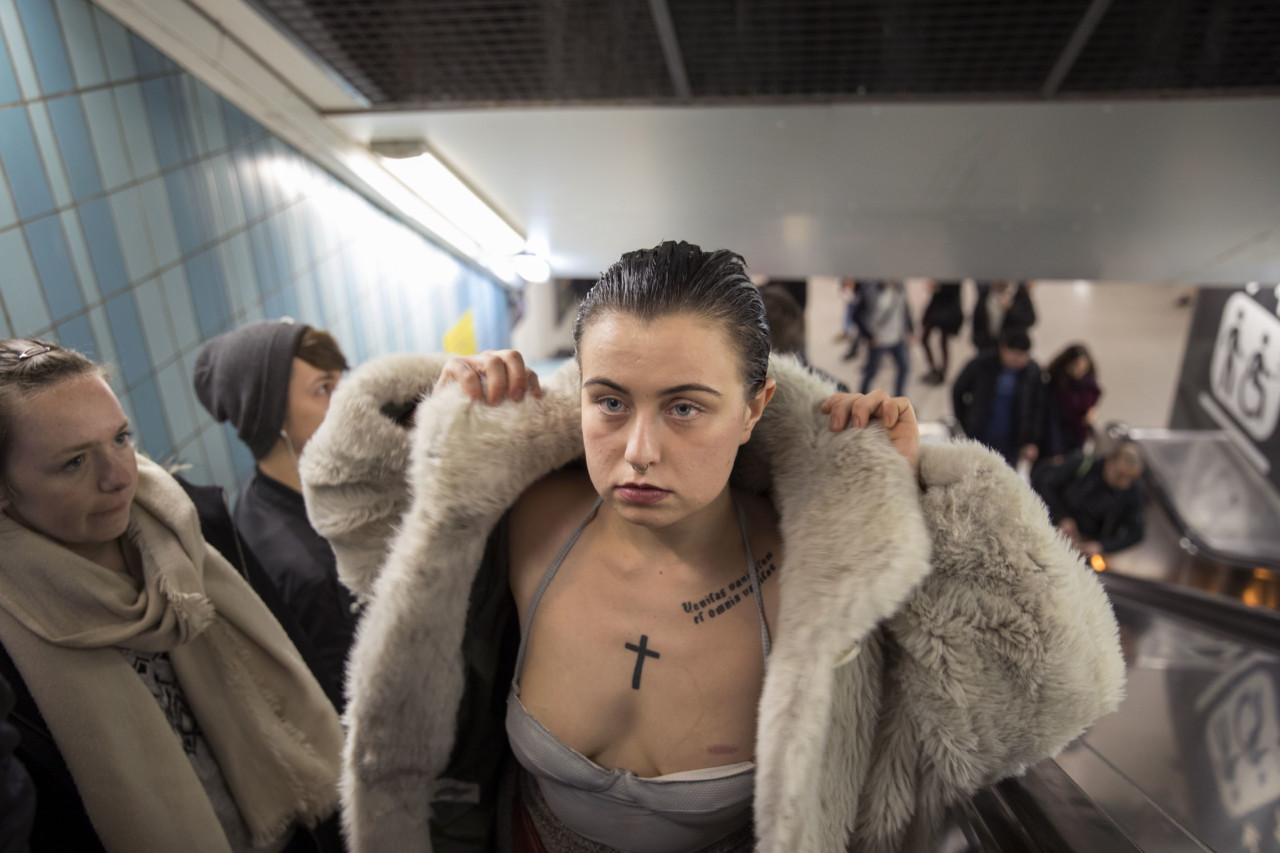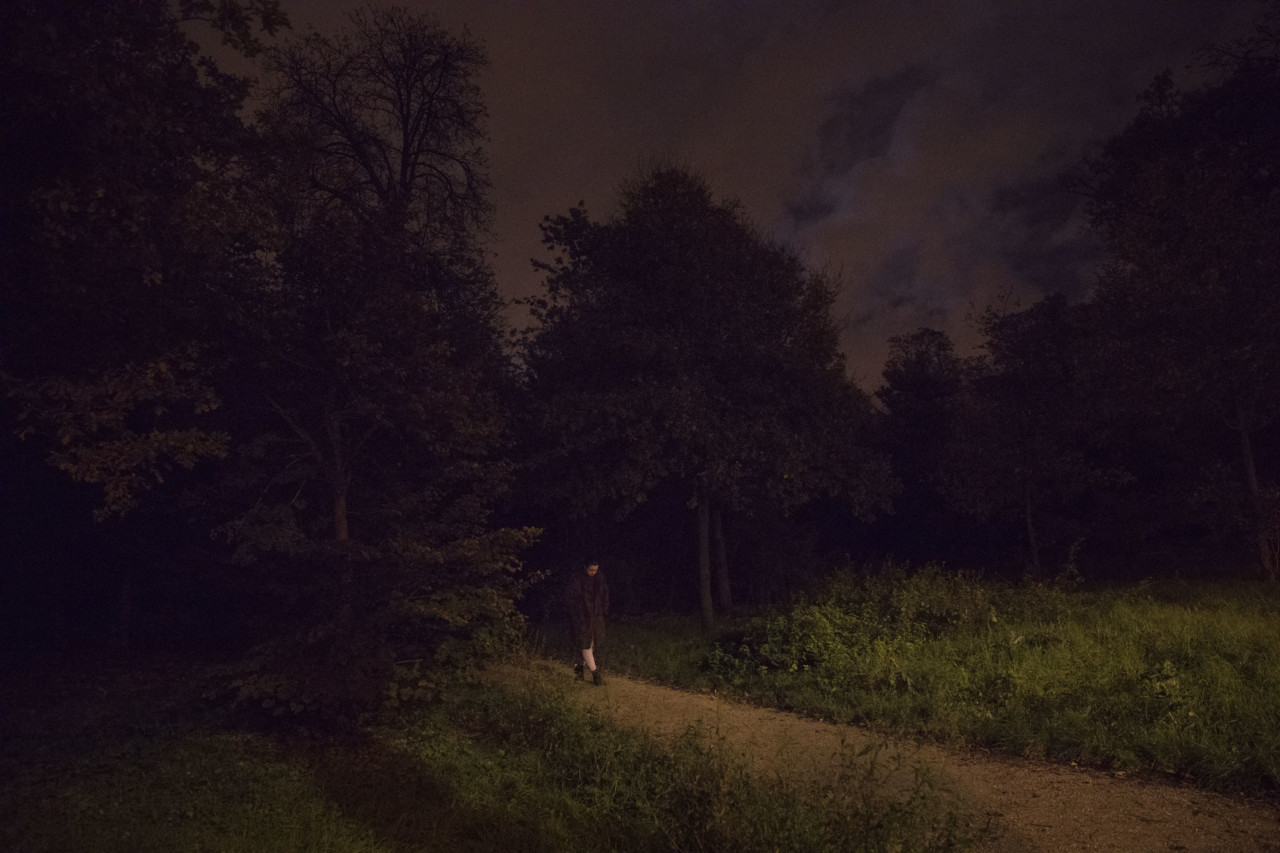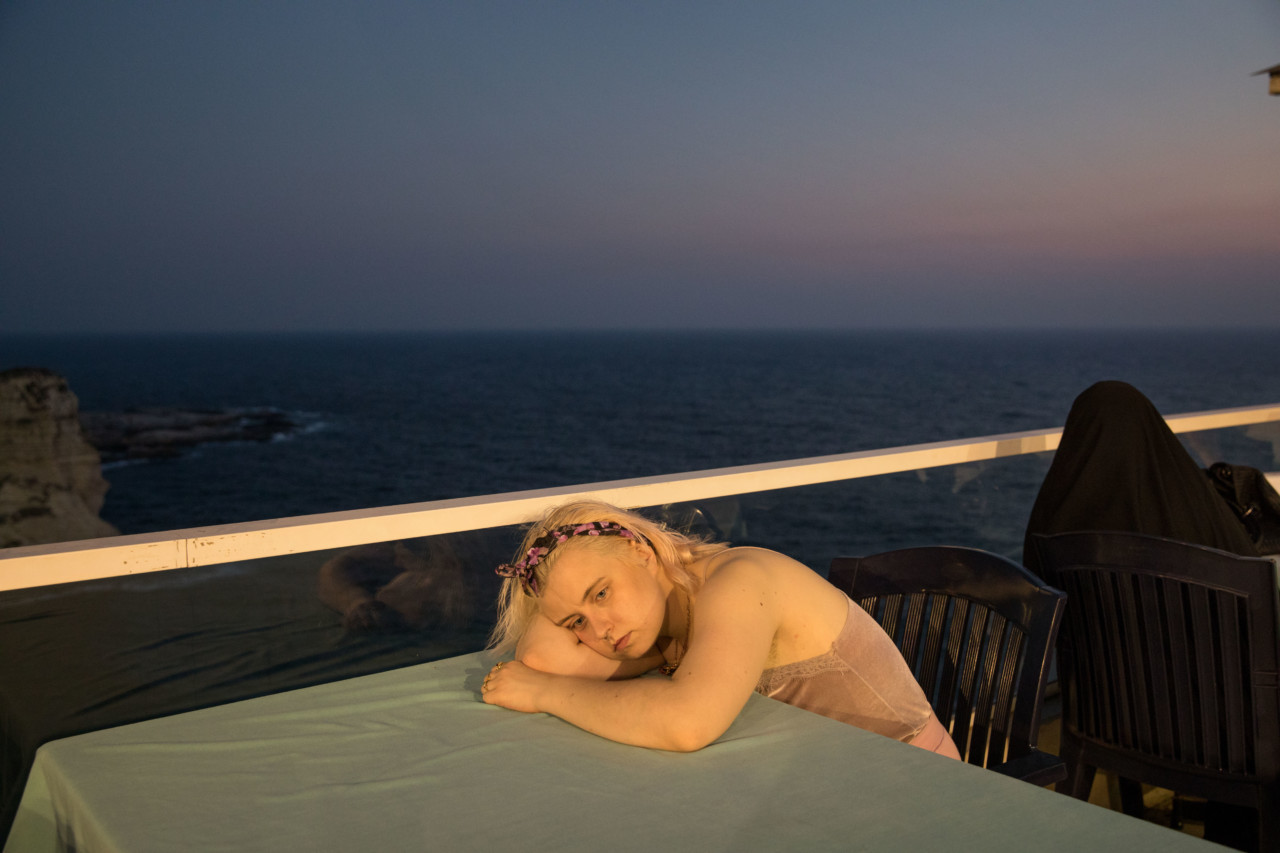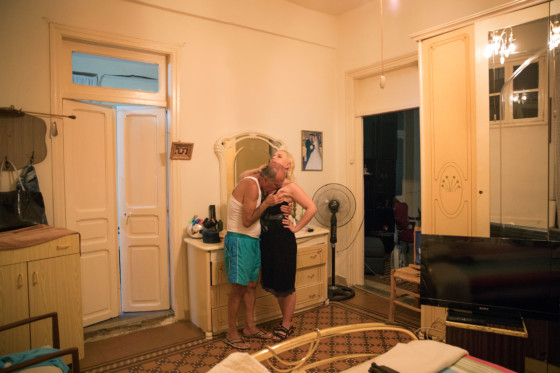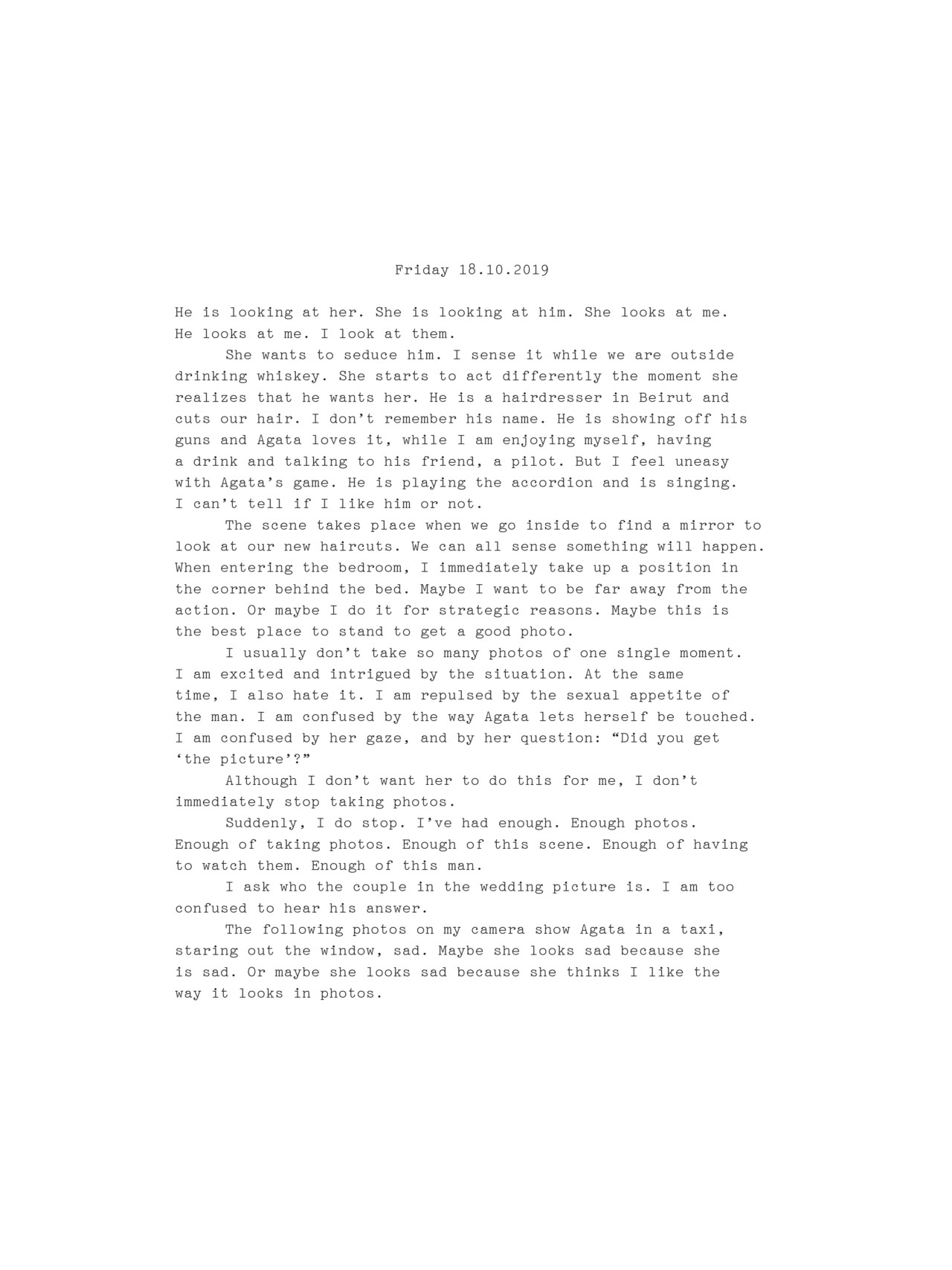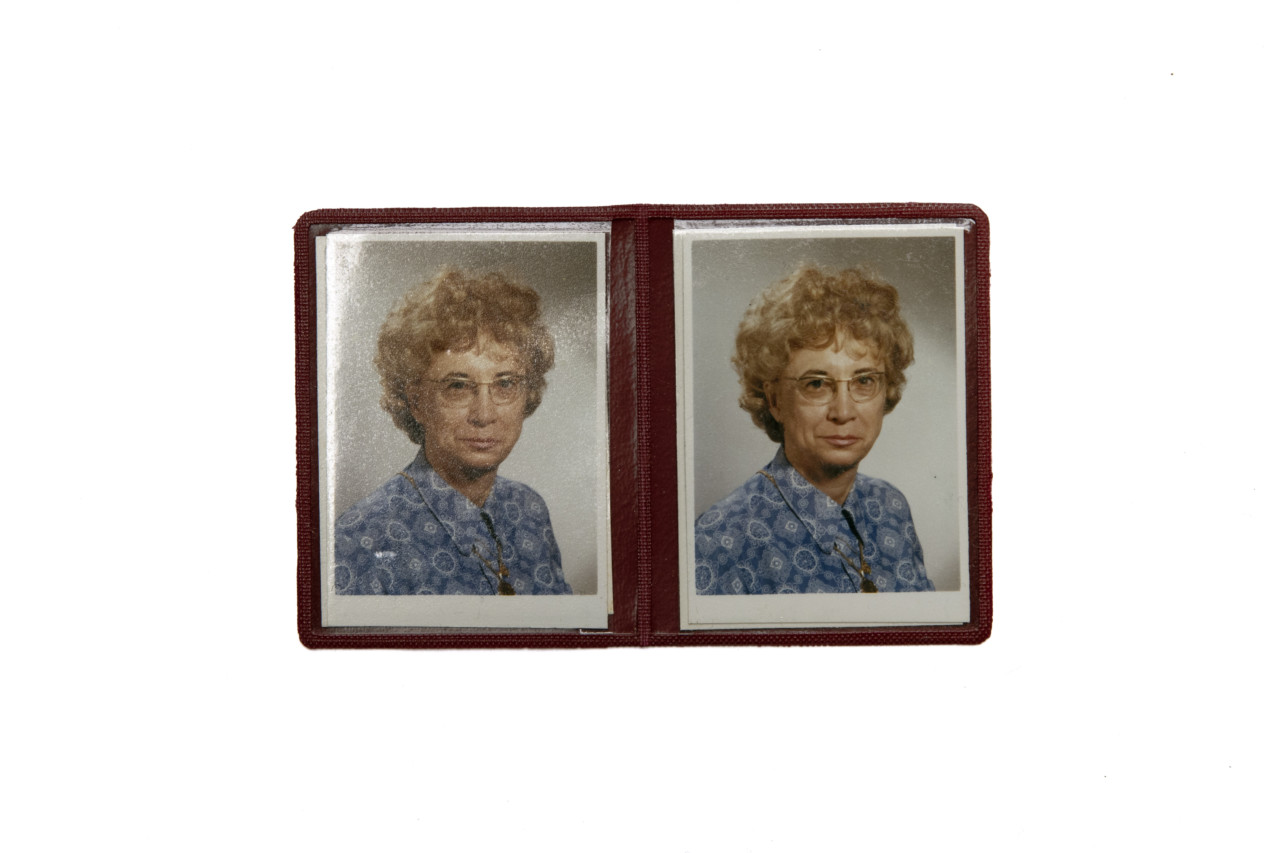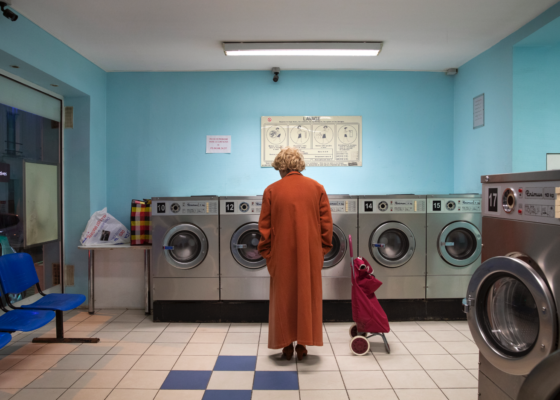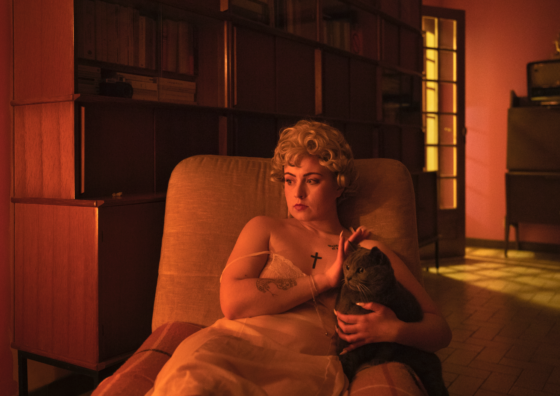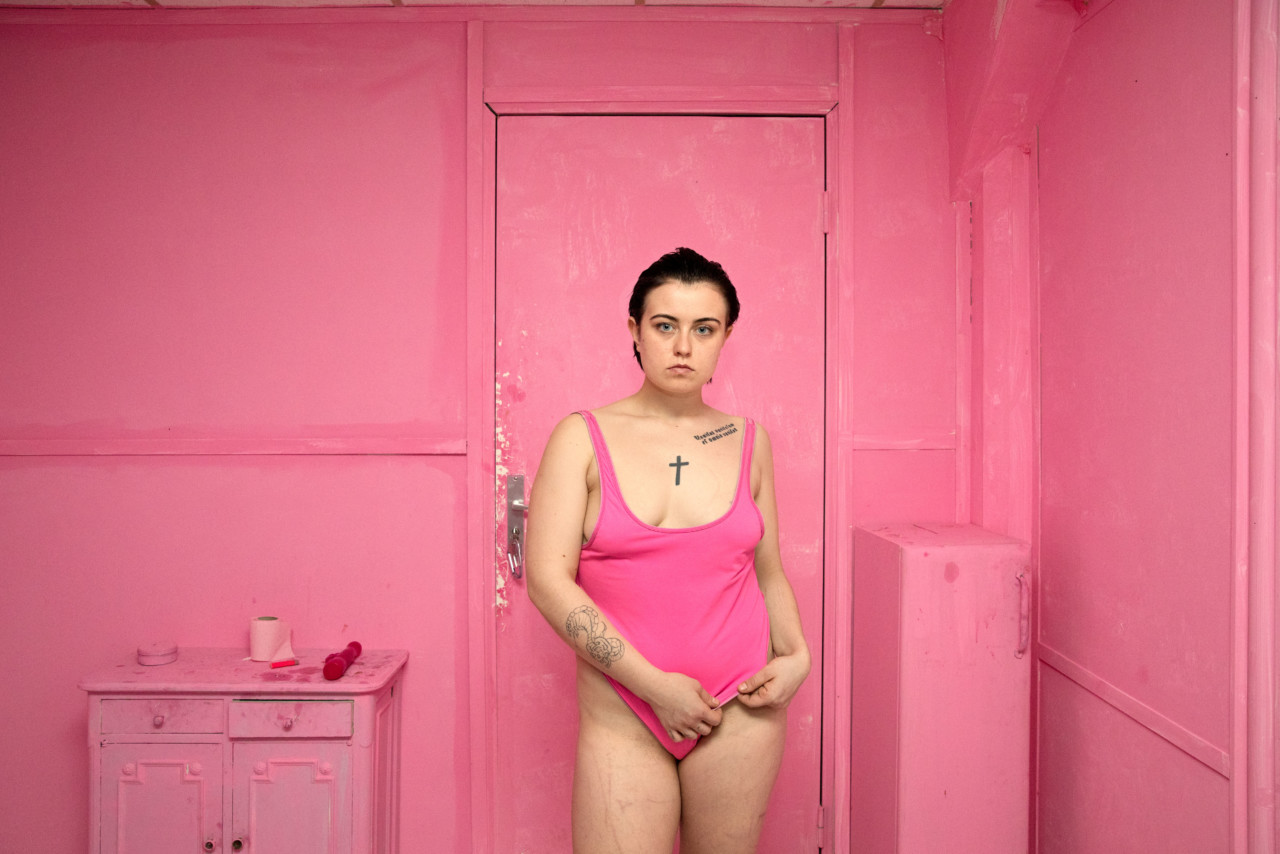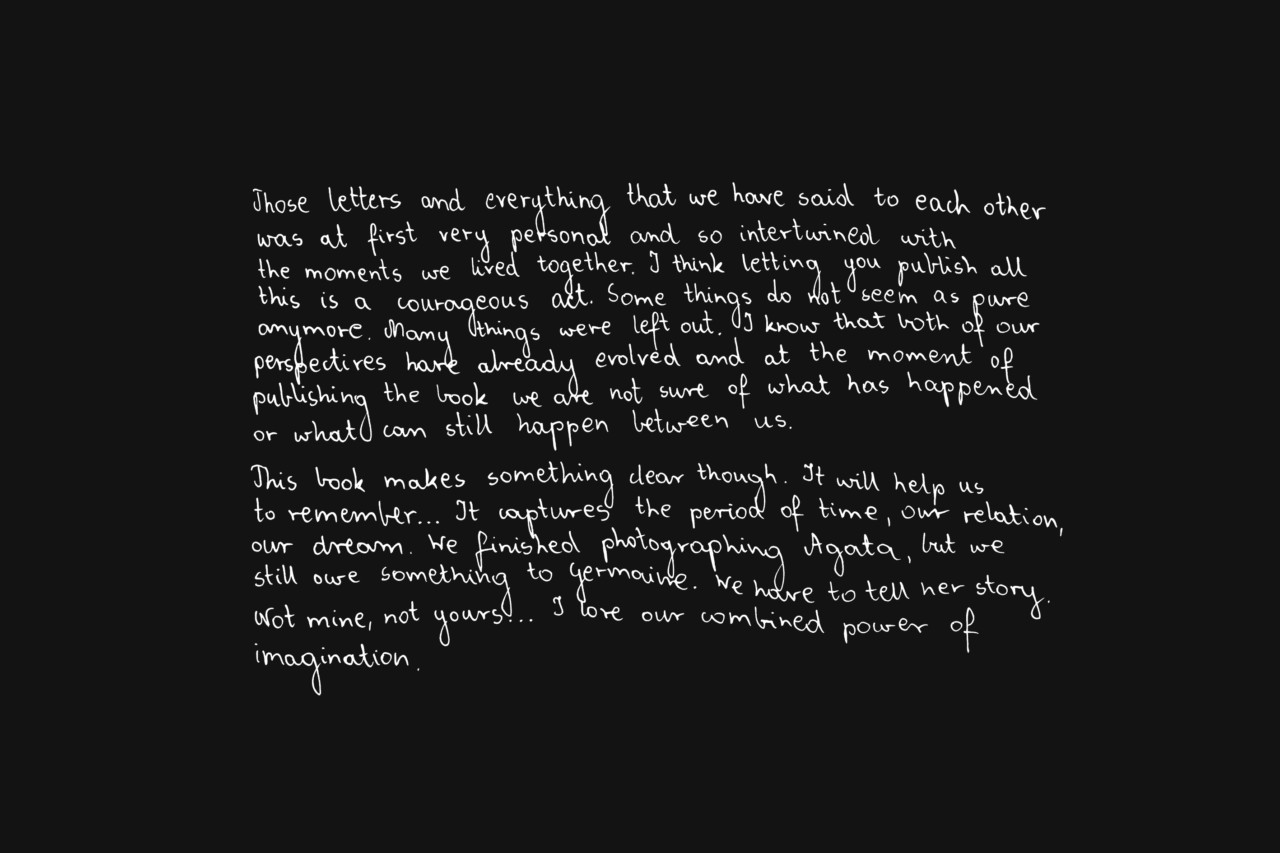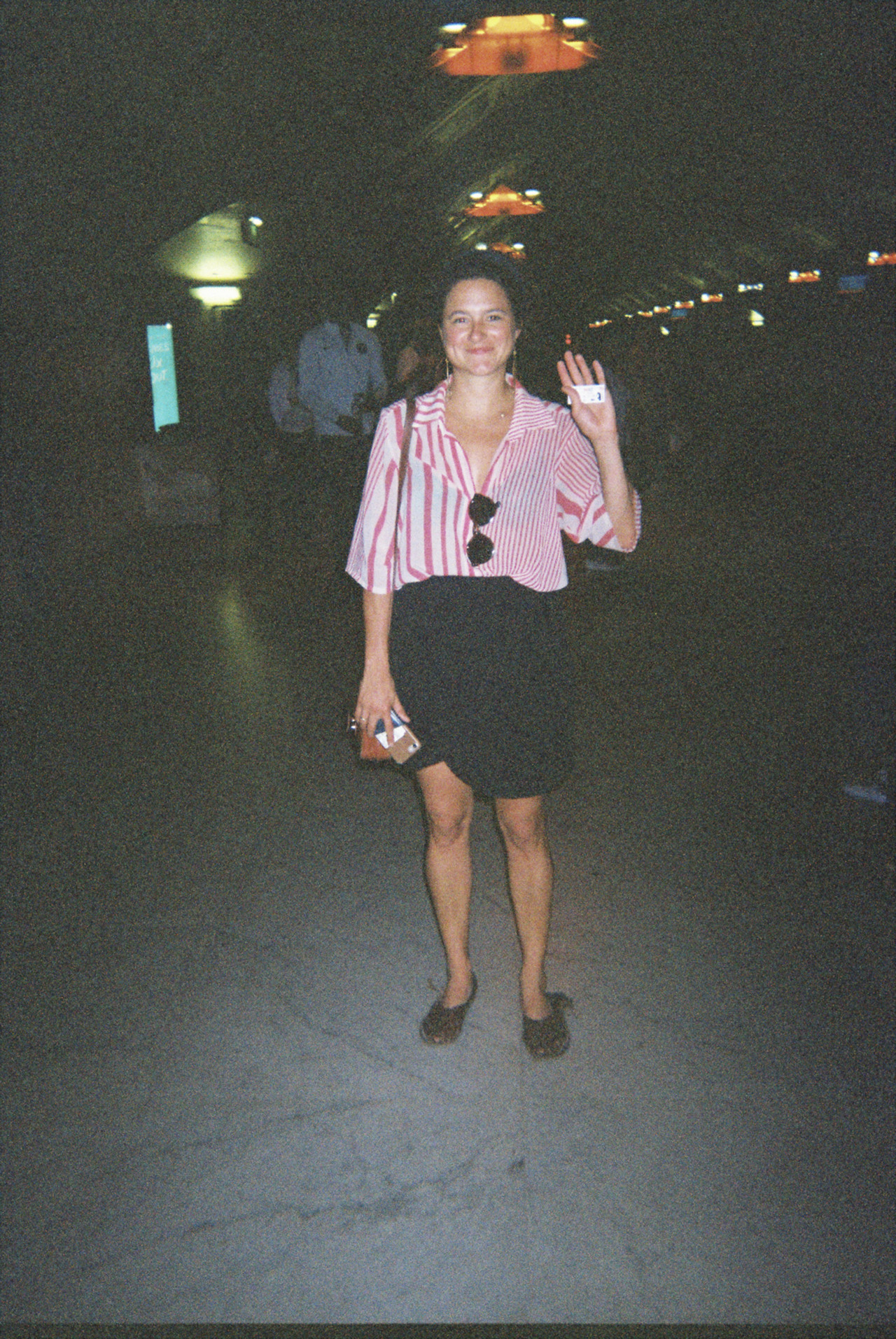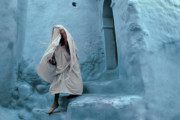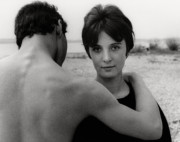Bieke Depoorter: “Every time I photographed Agata, I saw someone different”
As the book Agata is reprinted, Bieke Depoorter reflects on her long-term creative collaboration with Agata Kay and discusses how the project has changed her perception of photography and herself.
In one letter, Kay writes to Depoorter and says: “I love our combined power of imagination.” This is most apparent when Germaine enters the story. “Agata was squatting in a house that had belonged to a lady called Germaine,” explains Depoorter. “We found Germaine’s diaries and saw similarities between both Germaine and Kay. We became immersed in her stories.” Here, through a third party, Kay and Depoorter collaborate in a more traditional sense – finding and exploring a narrative that exists outside their own. Kay adopts the persona, or spirit, of Germaine and takes her out into the world, creating a world occupied by someone who has since passed and using her diaries, photos, and writings, to guide their thinking. “We found similarities in both woman’s thinking. I suggested Agata use the diaries of Germaine to start writing her reflections too,” says Depoorter. “In the Germaine chapter of the book, you can see Germaine’s real handwriting and photographs, not Agata’s.” The story of Germaine demonstrates another dynamic to the nature of the collaboration and works as a demonstration of the creative energy between the pair, and the different identities one can take on. Kay said she was going to use Depoorter to find her true identity.
The story is far from over. The first edition of the book sold out and won critical acclaim. They are now printing a second edition which can be pre-ordered here (for US purchases, please go here). Depoorter and Kay continue to be close friends, even though they questioned it in the book. Were they really friends or was it photography that defined the friendship? “The book as an object is part of the project. After the book was first published, the project and our lives continued,’ reflects Depoorter.
“After the book was published Agata gave an interesting lecture for the Beyond Magnum series about representation, the responsibilities of the photographer and her thoughts and disappointments. We decided to make a second book in which Agata takes the lead,” says Depoorter. “This was a collaboration, but it has not been an equal one. I’m no longer sure if the title covers the charge. Is this book ‘really’ about Agata? Is it not more about myself too? About the complex dynamics between photographer and subject? About the power relationship that comes with that, even though they can be in constant flux?” The pair reached a new understanding, whereby Kay could “really use” Depoorter and ask her to photograph some really specific things. Most recently, they have shifted roles entirely with Kay photographing Depoorter. Kay has now started to photograph her own stories, with Depoorter acting as her mentor. A new book, edited by Kay will bring her visual narrative into focus. As the collaboration and friendship evolves, so will the ways in which it is communicated with the world. “After we realized that this was a collaboration, there were still power dynamics at play,” says Depoorter. “This dynamic was in constant shift, and that fact remains at the heart of everything we have done and will do. It is complex, and the book shows that we don’t have fixed answers, but I think it’s important to dare to openly discuss questions around authorship.”


